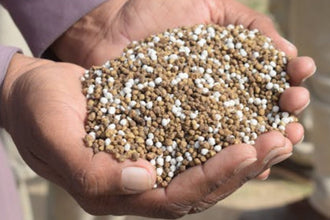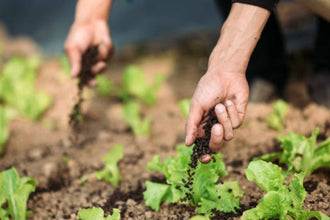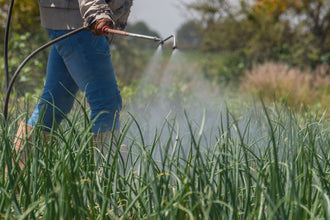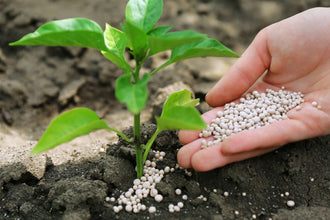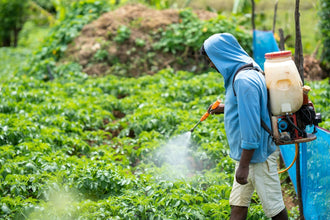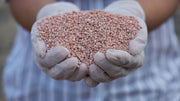
Potassium fertilizer helps keep your plants healthy and strong all season long. This nutrient does more than just feed your plants. It actually helps them fight off diseases and stay resilient when problems try to creep in. Most people think about nitrogen and phosphorus first, but potassium deserves just as much attention in your garden.
Your plants use potassium for tons of different jobs. Everything from moving water around to staying disease-free depends on having enough of this mineral. When plants don't get enough potassium, they get weak and become sitting ducks for all sorts of problems. Learning how this works can help you grow way healthier gardens.
What Potassium Actually Does for Your Plants
Plants rely on potassium for keeping themselves running smoothly. This nutrient controls how water moves in and out of plant cells. That affects everything you care about, like how green the leaves look and how good your tomatoes taste. Plants that get enough potassium can manage their water better, which means stronger stems and roots that actually work.
Potassium also helps with photosynthesis. That's how plants turn sunlight into food for themselves. Plants with good potassium levels make more energy, and that shows up as better growth and bigger harvests. This mineral actually helps turn on more than 60 different processes inside plants. Pretty important stuff.
The nutrient makes cell walls stronger too. Think of it like giving your plants better armor. Stronger walls mean plants can handle wind and rain better. They also make it harder for bad bacteria and fungi to get inside and cause trouble. That's why potassium fertilizer works so well for preventing diseases.
How Potassium Fertilizer Fights Off Plant Diseases
Disease resistance is probably the best thing potassium does for your plants. When plants get enough potassium, their cell walls become thicker and tougher. These stronger barriers make it really hard for harmful bacteria, fungi, and viruses to break in and start infections.
Potassium fertilizer helps plants make their own natural defense chemicals. These work like a plant's immune system, spotting trouble and fighting back fast. Plants with good potassium levels bounce back quicker from small infections. When diseases do show up, the symptoms usually aren't as bad.
The nutrient also helps plants keep the right pH balance inside their cells. Many disease-causing bugs prefer certain pH levels, so keeping things balanced through good potassium nutrition can stop infections before they even start.
Spotting Plants That Need More Potassium
Your plants will tell you when they need more potassium. The signs are pretty easy to spot once you know what to look for.
Leaf Problems:
-
Edges turn brown or yellow (called leaf scorch)
-
Usually starts on older leaves first
-
Gets worse and spreads if you don't fix it
Weak Growth:
-
Stems look spindly and weak
-
Plants fall over easily in wind or rain
-
Overall growth seems slow or stunted
Poor Fruit Quality:
-
Smaller fruits than normal
-
Colors don't develop right
-
Flavor isn't as good as it should be
Disease Issues:
-
More fungal infections than usual
-
Bacterial spots showing up
-
Bug damage that wouldn't normally happen
Picking the Right Potassium Fertilizer
You've got several options when it comes to potassium fertilizer. Each type has its own benefits and drawbacks.
Muriate of Potash (Potassium Chloride):
-
Most common and cheapest option
-
Plants can use it right away
-
Contains chloride that some plants don't like
Sulfate of Potash:
-
No chloride, so it's safer for sensitive plants
-
Costs more but also provides sulfur
-
Great for tobacco, potatoes, and fruit trees
Organic Sources:
-
Wood ash, kelp meal, and greensand
-
Release nutrients slowly over time
-
Also improve your soil structure
-
Compost and aged manure work too
Getting the Timing Right with Potassium Fertilizer
When you apply potassium fertilizer matters just as much as what type you use. Getting the timing right can make a huge difference in how well it works.
Most plants do best when they get potassium early in the growing season. This is when they're building their root systems and starting to really grow. Early applications help plants build a strong foundation for everything that comes later.
Fall applications work really well for plants that stick around all year, like perennials and grass. Potassium helps plants get ready for winter by making their cell walls stronger and improving cold tolerance. Plants that get good potassium in fall usually survive winter better and start growing earlier in spring.
Some plants have special potassium needs during certain times. Fruiting plants often want extra potassium when they're flowering and making fruit. If you time your potassium fertilizer applications right before these big growth periods, you'll usually see better fruit quality and bigger harvests.
Best Ways to Apply Potassium Fertilizer
How you put the fertilizer down affects how well it works. Different methods work better in different situations.
Broadcasting:
-
Spread fertilizer evenly over the whole area
-
Works great for established gardens and lawns
-
Let rain or watering carry it down to the roots
-
Light cultivating helps mix it into the soil
Side-Dressing:
-
Apply fertilizer in strips next to plant rows
-
Perfect for row crops like corn or beans
-
Puts nutrients right where plants can grab them
-
Reduces waste and works faster
Liquid Applications:
-
Can go through sprinkler systems or spray bottles
-
Plants absorb it quickly
-
Usually need to apply more often
-
Great for quick fixes when plants need help fast

Testing Your Soil and Managing Potassium
Soil testing tells you exactly what your garden needs. Most soils actually have plenty of potassium, but a lot of it gets locked up where plants can't reach it. A good soil test shows you both what's available right now and what conditions might be preventing plants from getting what they need.
Soil pH affects how well plants can grab potassium fertilizer from the soil. Most plants absorb potassium best when soil pH sits between 6.0 and 7.0. If your soil is too acidic or too alkaline, plants might not be able to use the potassium even when there's plenty there.
Clay soils hold onto potassium better than sandy soils. Sandy soils let potassium wash away with rain and watering. Knowing what kind of soil you have helps you figure out how much potassium fertilizer to use and how often to apply it.
Balancing Potassium with Other Nutrients
Potassium works best when it's balanced with other plant nutrients. Too much potassium can actually cause problems by blocking calcium and magnesium uptake. The smart approach balances everything based on what your soil test says and what your plants actually need.
Nitrogen and potassium fertilizer need to be applied in the right ratios. Most vegetables and flowers want balanced nutrition all season long. Some plants, like tomatoes, need extra potassium when they're making fruit.
Phosphorus levels also affect how well plants can use potassium. Too much phosphorus can actually reduce potassium absorption. Keeping the right P-K balance is important for plant health and disease resistance.
Common Potassium Fertilizer Mistakes to Avoid
Lots of gardeners think more is always better and end up using too much potassium fertilizer. Too much can actually hurt plants by messing with other nutrients and building up salts in the soil. Following soil test recommendations prevents over-application and keeps plants properly fed.
Bad timing is another common mistake. Applying potassium fertilizer too late in the season won't help annual crops much. Applying it too early in cold, wet soil can lead to the nutrients washing away before plants can use them.
People also ignore soil conditions when they apply fertilizer. Wet soils let nutrients leach away. Dry soils prevent proper uptake. Timing applications when soil moisture is just right helps fertilizer work better.
Organic vs. Synthetic Potassium Sources
Organic potassium sources work slowly and improve soil health over time. These materials feed the good microorganisms in your soil and help build fertility that lasts. Organic sources usually provide multiple nutrients and make soil structure better while supplying potassium.
Synthetic potassium fertilizer gives plants nutrients they can use right away. These products work great for fixing deficiencies quickly and providing targeted nutrition during important growth periods. Synthetic fertilizers usually cost less and you don't need to use as much.
Many successful gardeners use both organic and synthetic potassium sources to get the best of both worlds. This approach gives immediate nutrition when plants need it while building long-term soil health through organic matter.
Give Your Garden the Potassium Boost It Deserves
Getting potassium fertilizer right can completely transform how your garden grows. Plants with enough potassium develop better disease resistance, produce bigger harvests, and just look healthier overall. Start by testing your soil to see what potassium levels you're working with. Then build a fertilizing plan that actually matches what your plants need.
Ready to see what proper nutrition can do for your garden? Look for an organic fertilizer that gives your plants balanced nutrition, including the potassium they need to stay healthy and fight off diseases. Your plants will pay you back with the kind of growth and harvests that make all your hard work worth it.




